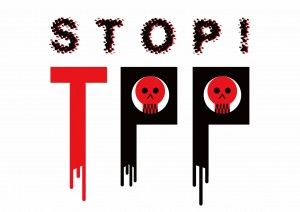Paul Krugman wrote about the human tragedy of the economic policy failures of the Obama administration which has prioritized deficit reduction over putting people back to work. The impact of those failures can be seen in New York City where, as reported in the New York Times, the racial wealth gap has widen since the recession:
The Urban Institute study found that the racial wealth gap yawned during the recession, even as the income gap between white Americans and nonwhite Americans remained stable. As of 2010, white families, on average, earned about $2 for every $1 that black and Hispanic families earned, a ratio that has remained roughly constant for the last 30 years. But when it comes to wealth – as measured by assets, like cash savings, homes and retirement accounts, minus debts, like mortgages and credit card balances – white families have far outpaced black and Hispanic ones. Before the recession, non-Hispanic white families, on average, were about four times as wealthy as nonwhite families, according to the Urban Institute’s analysis of Federal Reserve data. By 2010, whites were about six times as wealthy.
The dollar value of that gap has grown, as well. By the most recent data, the average white family had about $632,000 in wealth, versus $98,000 for black families and $110,000 for Hispanic families.
The two factors that contributed to the gap were the housing downturn and loss of retirement savings that hit black families the hardest due a number of elements: predatory lending in minority neighborhoods; a higher proportion of their wealth invested in the home; higher unemployment rates and lower incomes among blacks; and the need to borrow out of retirement finds in a depressed market, “leaving them out in the cold as the market recovered.”
An article written by the editors of The Nation pointed out this chilling fact:
Here is New York in 2013: a city of dazzling resurrection and official neglect, remarkable wealth and even more remarkable inequality. Despite the popular narrative of a city reborn-after the fiscal crisis of the ’70s, the crack epidemic of the ’80s, the terrorist attack of 2001, the superstorm of 2012-the extraordinary triumph of New York’s existence is tempered by the outrage of that inequality. Here, one of the country’s poorest congressional districts, primarily in the South Bronx, sits less than a mile from one of its wealthiest, which includes Manhattan’s Upper East Side. And here, a billionaire mayor presides over a homelessness crisis so massive that 50,000 men, women and children sleep in shelters each night. More New Yorkers are homeless these days than at any time since the Great Depression.
The numbers tell the story. Between 2000 and 2010, the median income of the city’s eight wealthiest neighborhoods jumped 55 percent, according to the Fiscal Policy Institute. Meanwhile, as the cushy precincts got even cushier, median income dipped 3 percent in middle-income areas and 0.2 percent in the poorest neighborhoods. [..]
The money pouring in at the top of the income brackets has simply pooled there, without trickling down to the bottom or even the middle. This great pooling has occurred as median wages have fallen, the cost of living has increased, and the poverty rate has risen to 21 percent-as high as it was in 1980. As a result, America’s most iconic city now has the same inequality index as Swaziland.
The article goes on to say that this isn’t entirely NYC’s fault with the economic shift over the last thirty years to finance but it also pointed out that Mayor Michael Bloomberg’s policies were a largely contributed to the problem.
[..] the stewards of New York City-its mayor, legislators and other influencers-could have made choices to counter this trend: “New York City’s government is significant enough in its breadth…that the policy tools exist and the wherewithal exists to do something at the margins to lessen inequality.” The choices, however, that might have corrected some of the skew-within education, economic development, labor rights, poverty policy, budgeting-have largely been ignored in favor of creating a very different model of metropolis. [..]
Bloomberg himself expressed this vision in a March 2012 piece in the Financial Times bearing the title “Cities Must Be Cool, Creative and In Control,” in which he wrote:
For cities to have sustained success, they must compete for the grand prize: intellectual capital and talent.
I have long believed that talent attracts capital far more effectively and consistently than capital attracts talent. The most creative individuals want to live in places that protect personal freedoms, prize diversity and offer an abundance of cultural opportunities.
Then he added, “Economists may not say it this way but the truth of the matter is: being cool counts.” [..]
In essence, Bloomberg’s is a vision of the city forged primarily around the care and feeding of thought leaders, professionals and strivers-with little concern, and sometimes active contempt, for the ones who do the care and feeding. (In 2011, 400,000 New York workers, many of whom toil in service sector jobs, were not paid enough to hoist themselves out of poverty.) This is a fundamentally two-tier style of urbanism, one in which a cool, creative and well-managed metropolis glitters like something lovely, its radiance drawing attention away from the dimmed surroundings.
Yves Smith at naked capitalism observes:
But you can see more signs of stress even in the more insulated parts of New York City. Retail vacancies are up, even on the well-trafficked shopping streets, the worst since the post-2009 period. More restaurants seem to be taking a hit too, which suggests that non-expense-account diners are cutting back. And if ZIRP-supported NYC is looking a bit less robust, how well can the rest of the country be faring?
h/t to Yves for the video
The rich get richer and the poor get poorer, but ain’t we got fun?


 The Electronic Frontier Foundation reports that
The Electronic Frontier Foundation reports that 
Recent Comments